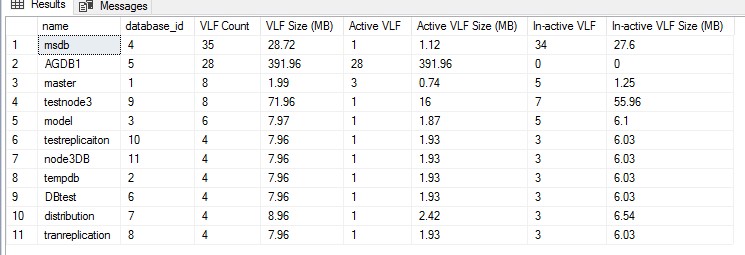Hi @amomen-8749,
As far as I know, it is impossible for us to monitor the space usage of one VLF. But we can use DBCC SQLPERF(LOGSPACE) to monitor the space usage of the log file. We can also use below T-SQL to get the information about the VLF count and its size.
SELECT [name], s.database_id,
COUNT(l.database_id) AS 'VLF Count',
SUM(vlf_size_mb) AS 'VLF Size (MB)',
SUM(CAST(vlf_active AS INT)) AS 'Active VLF',
SUM(vlf_active*vlf_size_mb) AS 'Active VLF Size (MB)',
COUNT(l.database_id)-SUM(CAST(vlf_active AS INT)) AS 'In-active VLF',
SUM(vlf_size_mb)-SUM(vlf_active*vlf_size_mb) AS 'In-active VLF Size (MB)'
FROM sys.databases s
CROSS APPLY sys.dm_db_log_info(s.database_id) l
GROUP BY [name], s.database_id
ORDER BY 'VLF Count' DESC
GO

If the response is helpful, please click "Accept Answer" and upvote it, as this could help other community members looking for similar thread.




